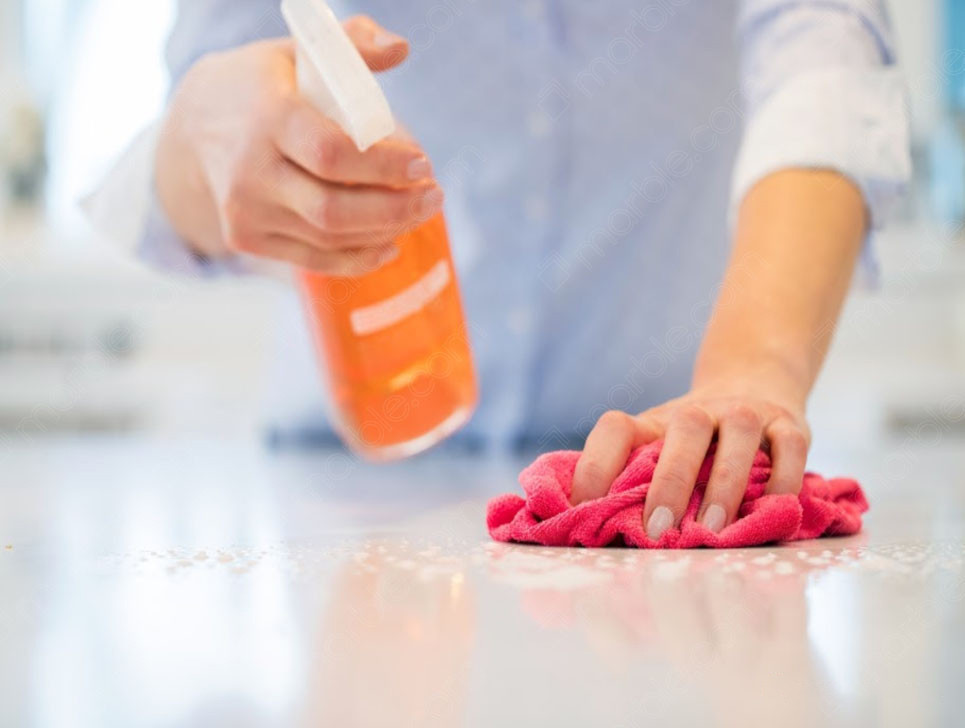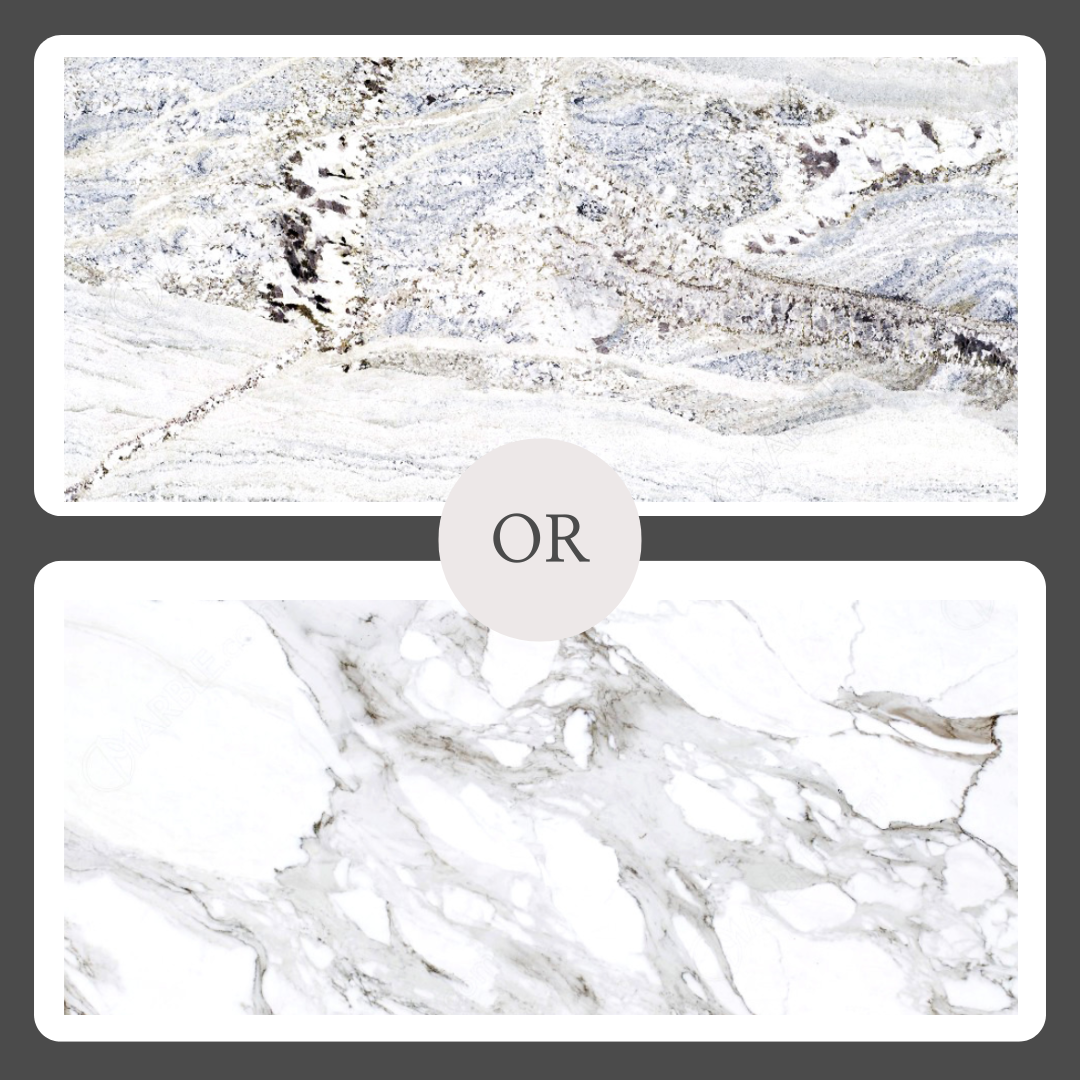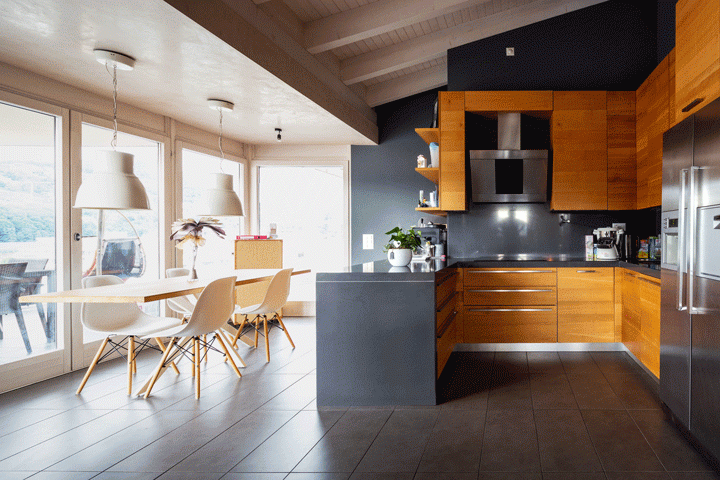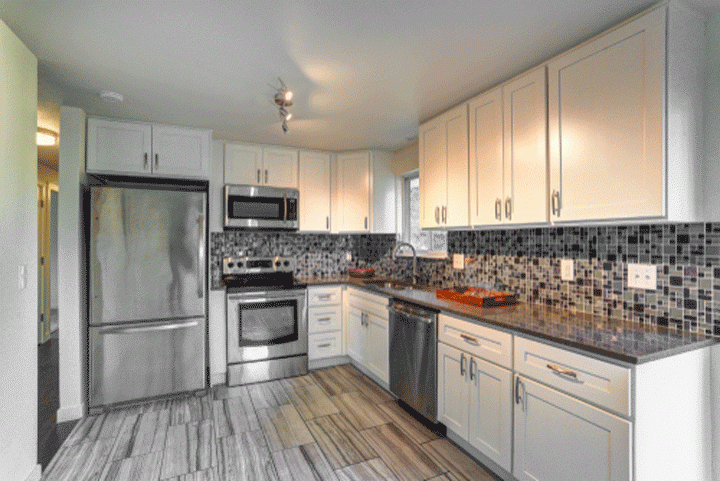Table of Contents
When you hear granite, you probably think immediately of glossy countertops or a sleek backsplash in a brand-new, modern kitchen. Most cleaning guides for granite actually assume that the reader is looking to clean their kitchen countertops, but not this one!
[get_quote]
Granite can actually be used in more places than just a kitchen. This natural stone can be used as a vanity top, fireplace surrounds, or in outdoor areas. One popular usage for granite outside of a kitchen is as a bathroom countertop. While many cleaning instructions for a bathroom countertop is similar to instructions for other stone elements, there are a few tips and tricks to note.

What is granite?
Granite is a fantastic, highly durable material that does not require much in terms of care.
We recommend wiping down granite daily with a liquid cleaner that is a combination of dish soap and water. In order to maintain its stain resistance, we also recommend applying a sealant periodically.
Also important to note is that granite is heat-resistant, but not heat-proof. In order to maintain your granite’s appearance, we do not recommend placing hot items on top of the countertop directly. While this may not seem like an issue in a bathroom, if you have an individual in your home using hot hair tools, they should place it on a trivet or hot pad, much like you would with hot pots and pans in a kitchen.
Using a Daily Cleaner
As we’ve said, we recommend using a daily basic cleaner on your countertop. Daily granite cleaners are available to be purchased, such as our All Granite and Marble Daily Cleaner, which also has an ingredient that seals as it cleans.
You can also make your own cleaner with products found at home. Just use soap and warm water and you have a perfect solution for cleaning granite. All you need to do is apply the liquid to the counter and then wipe the surface down with a soft, clean cloth. We do not recommend using any harsher materials to wipe the surface. For example, do not use a rough sponge.
Be sure to use soap that is pH neutral, or around a 7 on the pH range. Do not use more acidic cleaners, such as cleaners containing vinegar, ammonia, or bleach, as well as brand-name cleaners that contain these ingredients like Windex, Clorox. A strong acid may remove the sealant from the countertop, and make the stone vulnerable to damage. Also, avoid cleaners that have a lemon or orange scent as it may contain citric acid which can damage your countertop.
This cleaner could be applied daily, or at the very least, regularly.
In order to maintain the beauty of your brand new countertop, you should clean any spills that occur as soon as they happen. Even with a sealant, a spilled liquid sitting may still stain your granite. We also recommend using coasters when placing drinks down on the countertop, as well as using trivets under hot objects.
In a bathroom, toothpaste may be a concern. Granite may still be stained by more acidic liquids, including wine, coffee, orange juice, and yes, toothpaste. While you may not have to worry about the other liquids in your bathroom, toothpaste is a common occurrence. Wiping up any toothpaste residue as soon as it is on the surface will prevent significant damage.
Sealing your Countertop
LIke in the kitchen, your bathroom granite countertop also needs a sealant. The sealant will protect from staining. While the application of a sealant may sound like a hassle, it is a largely painless process. A sealant should be reapplied periodically, typically only once a year, however, it largely depends on the type of granite you choose. Lighter colored granite may need to be resealed more often than a darker shade.
To seal a granite countertop, follow the instructions on the sealer. Typically, the steps are as follows:
- Clear off and clean the countertop
- Apply the sealer using a brush, or if it comes in a spray bottle, simply spray it on the surface
- Wait while it absorbs. The exact time frame will vary depending on sealant brand, however, it is typically around 15 to 20 minutes.
- Wipe off any excess sealer that remains on the surface.
- OPTIONAL: This depends on the sealant, but some require the countertops to sit without being used for 24 hours.
When is it time to reseal your granite countertop?
In order to tell if it is time to reseal your granite countertops, you should conduct a simple water test.
First, pour a few drops of water on a small area of the countertop. Then, wait 15 to 20 minutes to see if the water is absorbed or if it beads on the surface. If absorbed, the countertop needs to be resealed. If beads, the current seal is still effective.
How to remove stains from granite
Bathroom granite countertops come with their own unique challenges. The many toiletry products and cleaners in your bathroom may lead to staining. Here is how to remove two different types of stains: oil-based stains or water-based stains.
To remove oil-based stains, we recommend purchasing an oil-stain remover, like this one, from Mr. Stone.
[get_quote]
If you need a cleaner quickly, there is a method to making a homemade one out of products you have laying around the house. All you need to do is make a paste of baking soda and water. Apply this paste to the stain and cover it with plastic wrap and then let it sit. Be sure to poke small holes in the plastic wrap. After letting it sit, remove the plastic wrap and paste, and the stain should be diminished.
Water-based stains can be removed with baking soda and hydrogen peroxide. Just follow the steps we described above for oil-based stains.
Overview
Bathroom granite countertops require similar care to that of kitchen granite countertops. While unlikely for granite countertops to have any staining, in the rare cases that a stain does occur, both types of countertops use the same percentage and cleaning methods. Use a daily cleaner as well as reapply a sealant periodically. Clean up spills as soon as they occur. With a little TLC, your granite stone will last a lifetime, no matter where they are in your home.
















 The article helped me immensely
The article helped me immensely
 I’m now more informed on the subject
I’m now more informed on the subject
 I have questions about Marble.com
I have questions about Marble.com
 The article was not accurate at all
The article was not accurate at all
 There is a serious lack of information
There is a serious lack of information
 I have questions about Marble.com
I have questions about Marble.com